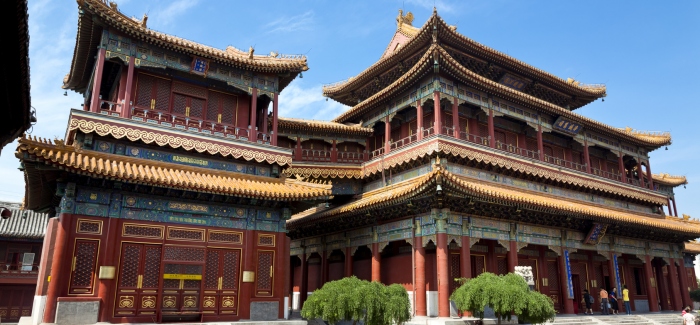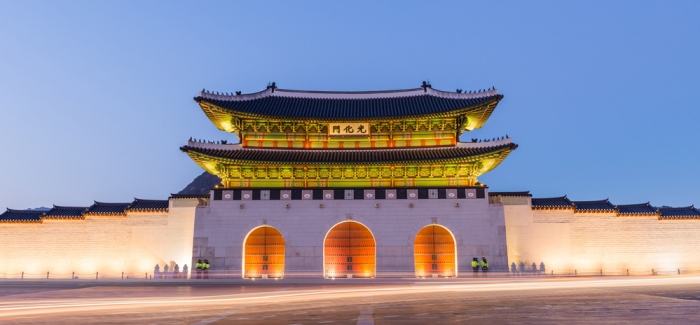Hong Kong and Japan have been the dominant forces in Asian higher education for at least the past decade, but this year’s QS University Rankings: Asia suggests the tide may be turning.
This year’s table sees Singapore and Korea emerge as the leaders in a new-look top 10, with the National University of Singapore (NUS) taking the top-spot for the first time in the ranking’s history. Close behind, South Korea’s KAIST is the biggest riser in the top 10, moving up by four to secure second place.
Singapore and Korea have been on an upward trajectory in recent years, with both countries channeling their current economic dynamism into ambitious higher education investment programs. Singapore’s NUS and Nanyang Technological University (NTU) are currently enjoying the benefits of a S$16.1 billion government scheme to improve their performance in science, technology and innovation, just the latest of five successive five-year plans rolled out since 1991.
Increased government spending has coincided with aggressive internationalization programs, alongside greater private-sector collaboration, most notably with the country’s burgeoning high-tech start-up sector. The results of the QS University Rankings: Asia testify to the success of these policies, with NUS and NTU emerging over the past decade as two of the undisputed powerhouses of Asian higher education.
 Success stories for Singapore and South Korea
Success stories for Singapore and South Korea
NUS retains its position as the most highly regarded institution among graduate employers, and a slight improvement in research productivity this year was enough to push it up into the overall top spot. It also scores within the top 20 in eight of the nine indicators used to compile the ranking – a feat unmatched by any other institution. NTU also continues its ascent towards the summit of the Asian university rankings, moving up three places to seventh, its highest ever position.
If Singapore has focused on improving the performance of two elite institutions, Korea has mobilized its sector en masse, having transformed its higher education participation rates from among the lowest to the highest in the OECD in the space of a generation. KAIST’s success is reflected across the nation’s leading universities, with 14 of the top 20 Korean institutions maintaining or improving their 2013 performance.
KAIST’s surge to second place has been achieved through an improved performance in the research-based metrics, alongside a concerted effort to internationalize. The institution now makes the top 10 for papers per faculty, and has significantly improved its score for citations per paper. Teaching nearly all classes in English has laid the foundations for KAIST’s concerted internationalization program, and the university has greatly increased its participation in exchange schemes at both undergraduate and postgraduate level.
 Lost ground for Hong Kong and Japan
Lost ground for Hong Kong and Japan
While Singapore and Korea are on the rise, Hong Kong and Japan have both seen their top institutions slip down the table this year. HKU drops one place to third and HKUST falls from first to fifth, making this the first year that a Hong Kong institution has failed to top the rankings since they were first compiled in 2009.
However, this downward trajectory may well be temporary. The so-called “double cohort” resulting from Hong Kong’s switch to a four-year undergraduate degree model in 2012 means both HKU and HKUST have seen their score for faculty/student ratio suffer, which coincided with the improvements made by NUS and KAIST to knock them off the top spots.
But while if Hong Kong’s slip has an identifiable short-term cause, Japan’s decline seems less easily reversible. The University of Tokyo drops to 10th this year, its lowest ever position. Having ranked 3rd in the inaugural QS University Rankings: Asia in 2009, Tokyo’s position has since progressively declined.
Despite remaining the region’s top institution for academic reputation and second only to NUS in the eyes of employers, Tokyo has struggled to keep pace with its rivals’ internationalization programs. Whereas institutions from Singapore and Hong Kong in particular have succeeded in attracting top international academics and students in vast numbers, Tokyo ranks outside of the top 100 in three of the four internationalization indicators used to create the QS University Rankings: Asia.
This pattern is reflected across the rest of Japan’s institutions, as the sector struggles to fulfil its ambition of doubling its intake of international students to 300,000 by 2020. Just one of Japan’s top 20 institutions makes the top 50 for its proportion of international students, a pattern matched in the international faculty indicator.
This internationalization gap has coincided with a failure to keep up with the pace of change across the other indicators, as Japan struggles to bounce back from the aftermath of the financial crisis, in contrast with the economic dynamism enjoyed by much of the rest of the region. Just three of Japan’s top 20 institutions improved their position this year, with 13 ranking lower than in 2013.
 Slower progress for Chinese universities
Slower progress for Chinese universities
In April 2014 a joint British Council and Oxford University report* found that English-language instruction is the most significant internationalization trend in global higher education, and this year’s rankings demonstrate its effects on the respective fortunes of Asian institutions. While Singapore and Hong Kong go from strength to strength, and the English-teaching policies of KAIST contribute to its improvements, Japan and China’s institutions are both held back in part by their failure to achieve similarly comprehensive levels of global engagement.
On a national level China continues its slow advance up the tables, and 13 of its top 20 institutions have improved their position this year. Yet at the top of the table the progress of Peking University and Tsinghua appears to have stalled, and there is little indication that the sort of wholesale regional dominance that some have predicted is likely to happen any time soon.
In the past decade China’s total expenditure on research and development has increased at an average rate of about 20% annually, and this has enabled vast improvements in both the volume and impact of its institutions’ research. Citation scores have increased again in this year’s rankings for the majority of Chinese institutions. Yet Peking and Tsinghua’s scores are still relatively modest compared to institutions that publish a great deal of research in English, such as NUS and HKU.
 Signs of progress across Asian higher education
Signs of progress across Asian higher education
While Singapore, Korea, Hong Kong, China and Japan remain the major players in Asian higher education, several other countries can point to signs of progress this year. Taiwan once again has 12 institutions in the top 100, of which eight have improved their position, with National Taiwan University ranking 21st. Malaysia’s top four all make slight improvements, with Universiti Malaya moving up one place to 31st.
Thailand’s top institution, Mahidol University, edges up two places into the top 40, while Philippine institutions have arrested their slide down the table in recent years, with five of the top six regaining some of the ground they lost in 2013. Four Indonesian institutions make the top 200, led by the University of Indonesia in 71st.
The major missing piece from this jigsaw puzzle is India – which, as this year’s rankings show, still has some way to go before it can compete at the level of the top institutions in the region. IIT Delhi maintains its 2013 position of 38th, but is the only one of India’s top eight institutions not to rank lower than last year. As in previous years, the IITs’ strong employer reputation and relatively high volume of published research is offset by weak scores for student/faculty ratio, research citations and internationalization.
* ‘English as a medium of instruction – a growing global phenomenon: phase 1'







